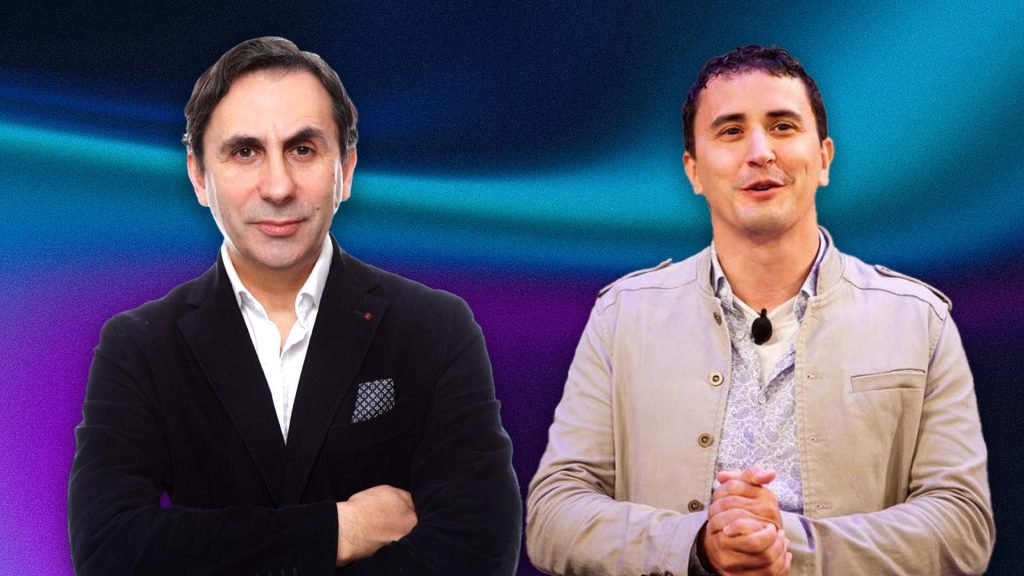In the latest episode of the Dinis Guarda Podcast, Emin Gün Sirer, Founder and CEO of Ava Labs, discusses the development of Avalanche’s scalable, multi-chain blockchain platform and its role in decentralised finance and gaming. He highlights the falling costs of AI and its growing integration with blockchain technology. Sirer also emphasises the increasing digitisation of assets across various sectors. The podcast is powered by Businessabc.net, Citiesabc.com, Wisdomia.ai, and Sportsabc.org.

Emin Gün Sirer is a computer scientist and the co-founder and CEO of Ava Labs, the company behind Avalanche, a high-speed, eco-friendly blockchain platform that supports custom smart contract applications. He was also an Associate Professor of Computer Science at Cornell University and held senior roles at AT&T Bell Labs, DEC SRC, and NEC.
During the interview with Dinis Guarda, Emin Gün Sirer discusses his first exploration of peer-to-peer systems:
“Before Bitcoin, I started looking into issues of coordination in peer-to-peer systems. The very first problem that I looked at was how to incentivise people in file-sharing networks.
I came up with this thing called karma, which is a magic internet currency. You get it by solving proofs of work, just like Bitcoin did many years later.
Satoshi had a brilliant insight over and on top of what I did in karma, in that he folded the consensus process into the creation of the coins. A fantastic idea—just a big step up from karma itself. Blockchains are here to stay. They are the next step in the evolution of large, complex systems. The types of systems that most people are familiar with are either a desktop on their computer or a service like Google or Facebook. Blockchains are the next step up, where there is nobody in charge.”
The first peer-to-peer paper by Emin
Emin Gün Sirer describes his first encounter with Bitcoin:
“One thing that Satoshi said was, here’s a protocol, right? You should follow this, and if you deviate from this protocol, if you start doing bad things, you’re going to get punished by people who do good things. This is a property that you want; it’s called incentive compatibility.
We came up with an alternative protocol, an alternative sequence of actions that you could take as a miner in Bitcoin and make more money than you should. This is called selfish mining, and it invalidated some of the claims that Satoshi made.
We published this. But first of all, we had a moment of discussion, like, do we publish this or do we go into mining, you know, and start getting a lot of Bitcoin for essentially free? Of course, we chose to publish.
There were crowdfunded attempts to prove us wrong. You know, these academics, what do they know? They’re wrong. Satoshi is perfect. He can’t have made a mistake. Let’s try to prove them wrong.
All three crowdfunded attempts, when they simulated our results, found out, oh yeah, it’s exactly as they say it is. And they flipped and they said, ‘Yeah, these guys are right.’
The initial reaction, of course, whenever your profit is being questioned, is to say, ‘Oh, you know, you’re a heathen.’ But then, to their credit, they realised that we serve the same god of decentralisation of digital assets and that we mean well. We mean to describe, you know, here are the limits of our profit.”
Decentralised consensus protocols
Emin Gün Sirer explains how his experience with large-scale systems and databases informed his work on blockchain technology
“I had worked previously on how to get [large-scale systems] to be super fast. I had worked on large-scale databases, data centre databases that operate very, very fast, very close to hardware speeds. I took some of that learning and started applying it to blockchains.
One of the first things we did was characterise the decentralisation of various currencies, various blockchains. People want decentralisation. What does it mean to be decentralised? Which ones are better? What are the trade-offs in achieving decentralisation?
I looked at the security of coins at rest. Is there a way to recall coins that have been stolen without violating the finality guarantees of Bitcoin?
We invented certain things called Bitcoin covenants. So, how can I mark individual bills so that they carry with them some restrictions or some additional rules that those bills must follow, that perhaps would make them more useful than a regular old bill?
We came up with a whole series of efforts. A faster version of Bitcoin called Bitcoin NG, the next generation.
I built the world’s fastest layer 2. It’s still the world’s fastest layer 2 called Tchan, and we sent Bitcoin from London to New York in a few dozen milliseconds.
Compared to the hour that it takes Bitcoin itself to do the same thing, this was revolutionary. It’s still the fastest one.
Finally, it took me to lightweight, super scalable consensus protocols. This was the holy grail at the time, and that was the biggest outstanding problem. I applied everything I knew from databases, operating systems, and distributed systems to try to build the world’s fastest consensus protocol.”
The convergence of AI, blockchain, and gaming
Emin Gün Sirer discusses the rapid evolution of AI, blockchain, and their impact on society, particularly in the realms of gaming, finance, and digital assets:
“There’s an enormous push into AI, people realise that it’s going to have enormous societal impact and a lot of money is going into it because these AI agents are very expensive to train, very expensive to train.
The costs are also coming down, I think we’re going to see practical AI agents being trained for specialised uses for a lot less than they have been in the past, and we will see their quality of effort quality of intelligence rise over time.
We’ve reached a certain inflexion point. Costs have come down; it takes less than a penny to do a transaction on Avalanche. In fact, it typically costs less than a hundredth of a penny to do anything you want on Avalanche; it’s super cheap.
We’re going to see more commoditisation of block space. It’s very easy to start your own Avalanche L1 to have your own blockchain that can communicate with all of the infrastructure we’ve built, and you’re immediately integrated into exchanges and all that other blockchain infrastructure.
Old systems that had societal negative societal impact, like proof of work that were burning fossil fuels, are going down. Avalanche is a green, sustainable technology.
At the confluence of all of these, we are going into an era where blockchains and cryptocurrencies are not a game of constantly promising things; we can deliver. Avalanche has shown that even for very demanding applications like computer games, you can have a blockchain that can uphold their incredibly demanding needs.
This game called Off the Grid, for example, has 15 million users, It’s been out a few months, 15 million users already, and all of these people are, stealing each other’s mechanical arms and mechanical legs and guns, and all of those are blockchain transactions, Nobody even realises that those are blockchain transactions.
DeFi itself has shown to be a big, big thing. Stablecoins have perfect product-market fit for this; we’re seeing the rise of stablecoins even as we speak.
Every asset, every single asset, wants to be digital. Your house deed wants to be digital, your car title wants to be digital, your jewellery wants to be digital, your gold wants to be digital, certainly your financial assets have to be digital.”

Shikha Negi is a Content Writer at ztudium with expertise in writing and proofreading content. Having created more than 500 articles encompassing a diverse range of educational topics, from breaking news to in-depth analysis and long-form content, Shikha has a deep understanding of emerging trends in business, technology (including AI, blockchain, and the metaverse), and societal shifts, As the author at Sarvgyan News, Shikha has demonstrated expertise in crafting engaging and informative content tailored for various audiences, including students, educators, and professionals.









